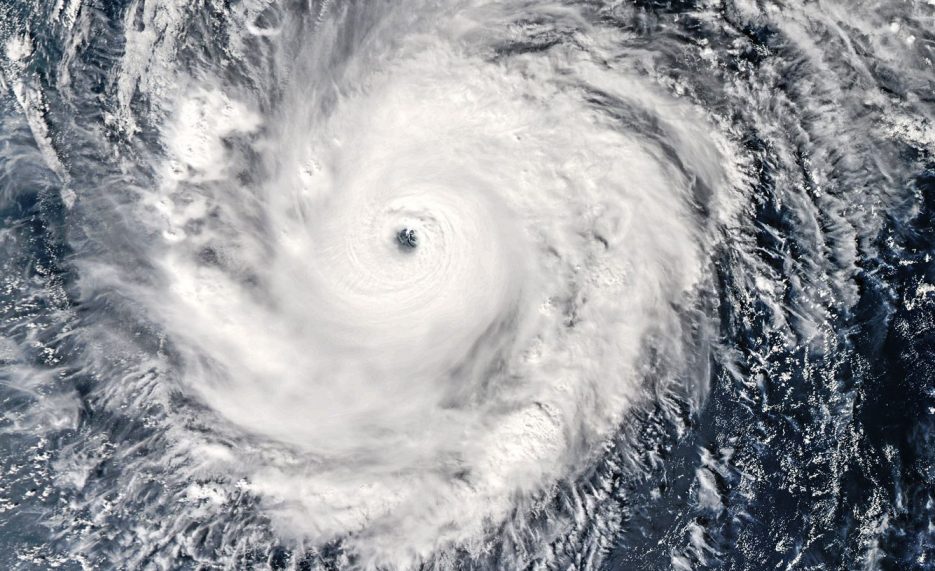Hurricane Dorian Preparedness: Tips for Animal Owners

A still-strong Hurricane Dorian unloaded heavy rain and dangerous winds of up to 110 mph on coastal areas of the Carolinas Thursday afternoon, causing widespread power outages and spawning multiple tornadoes.
The National Hurricane Center said Dorian was traveling north at 8 mph and wavering between a Category 2 and 3 hurricane at 2 p.m. Thursday, with its eye just off Cape Romain, S.C. Hurricane conditions are forecast for North Carolina throughout the day Thursday and into Friday.
More than 200,000 are without power in South Carolina, and more than 4,000 people along the North Carolina coast were without power Thursday afternoon. In North Carolina, dozens of roads are already flooded, according to the NHC, and the number of tornado watches and warnings grow. Multiple tornadoes forming on the northern edge of the storm were reported in North Carolina, including one in Emerald Isle at 9 a.m. Thursday and another in Brunswick County.
Coastal communities are still expected to receive 10 to 15 inches of rain as the storm moves north toward the Outer Banks. Storm surges are still in effect throughout North Carolina’s coast. The storm’s eye is projected to reach the Wilmington area by early Friday
For central North Carolina and the Sandhills — areas still under tropical storm warnings — 30 to 60 mph winds are still expected, along with anywhere from 1 to 8 inches of rain. Rainfall totals and wind speeds increase moving east, especially past Interstate 95.
Mandatory evacuations from N.C. Gov. Roy Cooper are still in effect for the state’s barrier islands, including areas such as Carolina Beach, Kure Beach, Wrightsville Beach and Figure Eight Island.
Cooper continues to urge North Carolinians to prepare for the hurricane, including gathering food, water and other necessities that could potentially last for days. Cooper is also advising farmers to make considerations to ensure the safety of livestock. Officials are reminding North Carolinians to consider their pets in hurricane preparations, including gathering supplies into accessible containers and including them in any evacuation or safety plans.
Officials suggest the following:
- Be sure your emergency supplies kit has enough bottled water and non-perishable food to sustain each family member for three to seven days. Include a weather radio, flashlight, extra batteries, toiletries, a change of clothes, blankets or sleeping bag, rain gear and appropriate footwear. Also include copies of important documents, such as birth certificates and insurance policies. Go to Ready NC for regularly updated information.
- Plan for your pets. Gather supplies and papers for your pet and put them in an easily-accessible container. One of the most common reasons people get caught in bad weather is because they do not have carriers for cats. Get at least one of the simple cardboard ones if you have nothing.
- Prepare your home. Clean out gutters and drain pipes. Clear your decks and outside of debris, furniture, etc., that could damage buildings in strong winds. Lower/take down elevated bird feeders, lights, etc.
- Determine if you are in a flood-prone area, such as near to a creek or in a low area surrounded by higher ground. You will be at higher risk of water damage. You can go to http://fris.nc.gov/fris/Home.aspx?ST=NC, and enter your address to see what the NC Emergency Management Flood Risk Info System has on your area.
RESOURCES:
COMPANION ANIMALS
If you take pets to an emergency shelter that allows them, you’ll need to have pet supplies, collar with ID, up-to-date veterinarian records, a pet carrier and leash. A picture of the pet is good to have. For identification purposes, it is also recommended that pets be microchipped. If there is no shelter that accepts pets, look for local hotels that allow pets such as those listed at www.petswelcome.com.
- American Veterinary Medical Association: https://www.avma.org/public/EmergencyCare/Pages/Pets-and-Disasters.aspx
- Federal Emergency Management Agency: http://www.ready.gov/hurricanes
- American Red Cross: http://www.redcross.org/prepare/location/home-family/pets
- Aquarium Owners: Greg Lewbart’s Suggestions for Power Outages: https://cvm.ncsu.edu/dealing-with-aquariums-and-ponds-during-power-outages/
LIVESTOCK, HORSES, AND POULTRY
- North Carolina Department of Agriculture and Consumer Services: http://www.ncagr.gov/disaster/Livestock.htm
- Staying or Leaving in the Face of a Disaster Becomes a Critical Consideration for Horse Owners: https://cvm.ncsu.edu/staying-or-leaving-in-the-face-of-a-disaster-becomes-a-critical-question-for-horse-owners
- Horses and Disasters: Planning for the Unthinkable: https://cvm.ncsu.edu/horses-and-disasters-planning-for-the-unthinkable/
- The National Equine Evacuation Directory is a free service provided by Fleet of Angels to help organize volunteers’ and service providers’ information into a user-friendly platform that’s publicly accessible. https://www.nationalequineevacuationdirectory.com/
- NC Horse Equine Directory via NCDA&CS Marketing division: http://www.ncagr.gov/markets/livestock/horse/directory/directory.asp?TOS=4
Pamphlets for Farm and Ranch Owners Dealing with Flooding
- Flooding & Livestock Owners Preparing, Responding and Recovery
- Flooding & Equine Owners Preparing, Responding and Recovery
Preparing and Responding to Flooding for Dairy Producers
ADDITIONAL RESOURCES
- http://www.wral.com/weather or WRAL Channel 5.
- http://www.weather.gov/rah The National Weather Service Forecast Office, Raleigh
- http://tims.ncdot.gov/tims/default.aspx The NC Dept of Transportation Travel Information System. You can also dial 511 to get automated traffic incident information.
- https://www.ncsu.edu/emergency-information The NC State WolfAlert System, for updates on University operations and issues.
5. Establish evacuation routes for your area. Plan on at least two ways out of your area; one might be blocked. If you live with other people, all should know of and agree to congregation meet-up places away from your home, in case you have to evacuate or cannot get to your neighborhood.
6. Listen to radio/local TV for advice. Stay tuned to local news for the latest advisories from the National Weather Service and National Hurricane Center (NHC), as well as state and local emergency management officials.
LIVESTOCK, HORSES, AND POULTRY
- North Carolina Department of Agriculture and Consumer Services: http://www.ncagr.gov/disaster/Livestock.htm
- Staying or Leaving in the Face of a Disaster Becomes a Critical Consideration for Horse Owners: https://cvm.ncsu.edu/staying-or-leaving-in-the-face-of-a-disaster-becomes-a-critical-question-for-horse-owners
- Horses and Disasters: Planning for the Unthinkable: https://cvm.ncsu.edu/horses-and-disasters-planning-for-the-unthinkable/
- The National Equine Evacuation Directory is a free service provided by Fleet of Angels to help organize volunteers’ and service providers’ information into a user-friendly platform that’s publicly accessible. https://www.nationalequineevacuationdirectory.com/
- NC Horse Equine Directory via NCDA&CS Marketing division: http://www.ncagr.gov/markets/livestock/horse/directory/directory.asp?TOS=4
Pamphlets for Farm and Ranch Owners Dealing with Flooding
- Flooding & Livestock Owners Preparing, Responding and Recovery
- Flooding & Equine Owners Preparing, Responding and Recovery
Preparing and Responding to Flooding for Dairy Producers
ADDITIONAL RESOURCES
- http://www.wral.com/weather or WRAL Channel 5.
- http://www.weather.gov/rah The National Weather Service Forecast Office, Raleigh
- http://tims.ncdot.gov/tims/default.aspx The NC Dept of Transportation Travel Information System. You can also dial 511 to get automated traffic incident information.
- https://www.ncsu.edu/emergency-information The NC State WolfAlert System, for updates on University operations and issues.
7. Establish evacuation routes for your area. Plan on at least two ways out of your area; one might be blocked. If you live with other people, all should know of and agree to congregation meet-up places away from your home, in case you have to evacuate or cannot get to your neighborhood.
8. Listen to radio/local TV for advice. Stay tuned to local news for the latest advisories from the National Weather Service and National Hurricane Center (NHC), as well as state and local emergency management officials.


